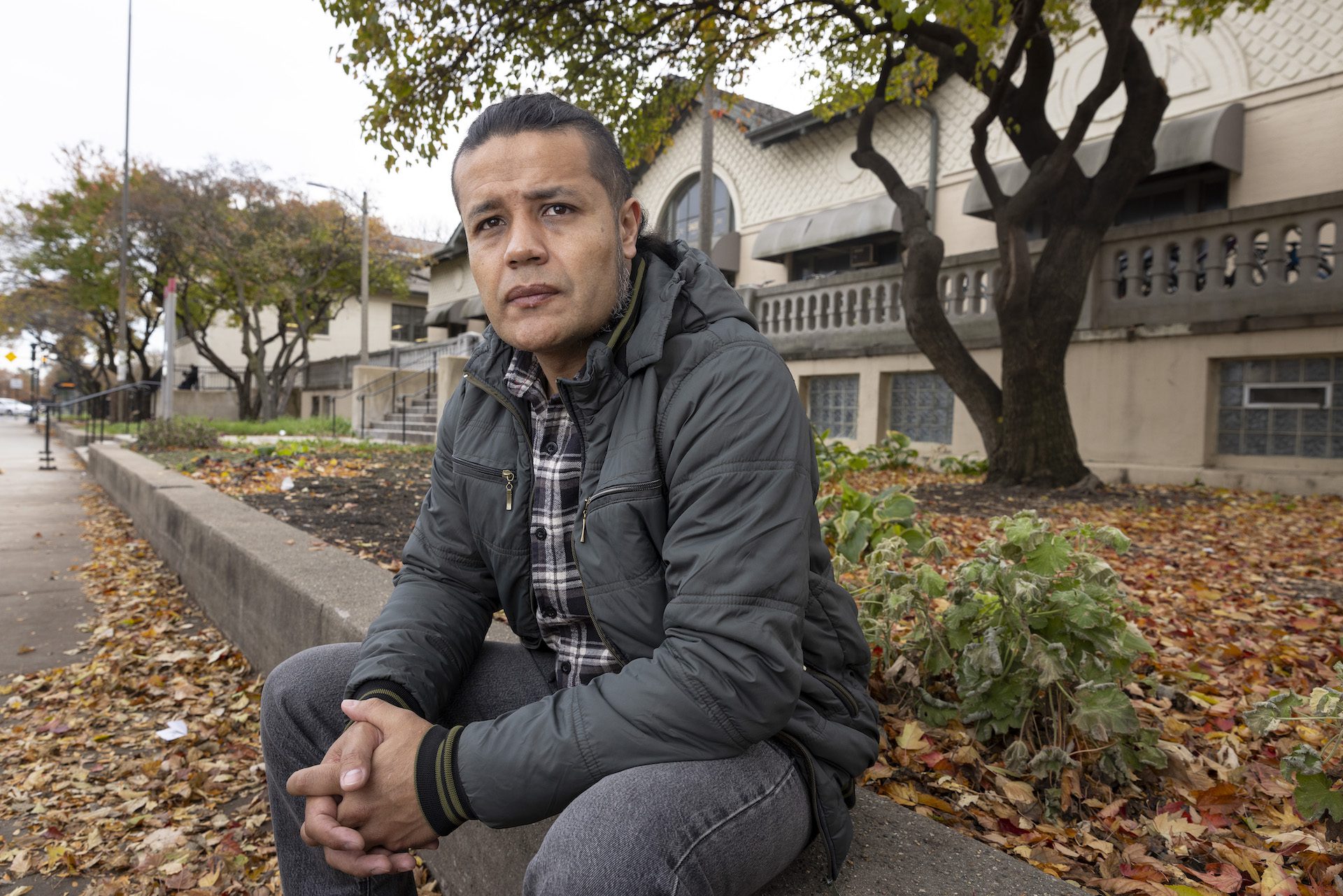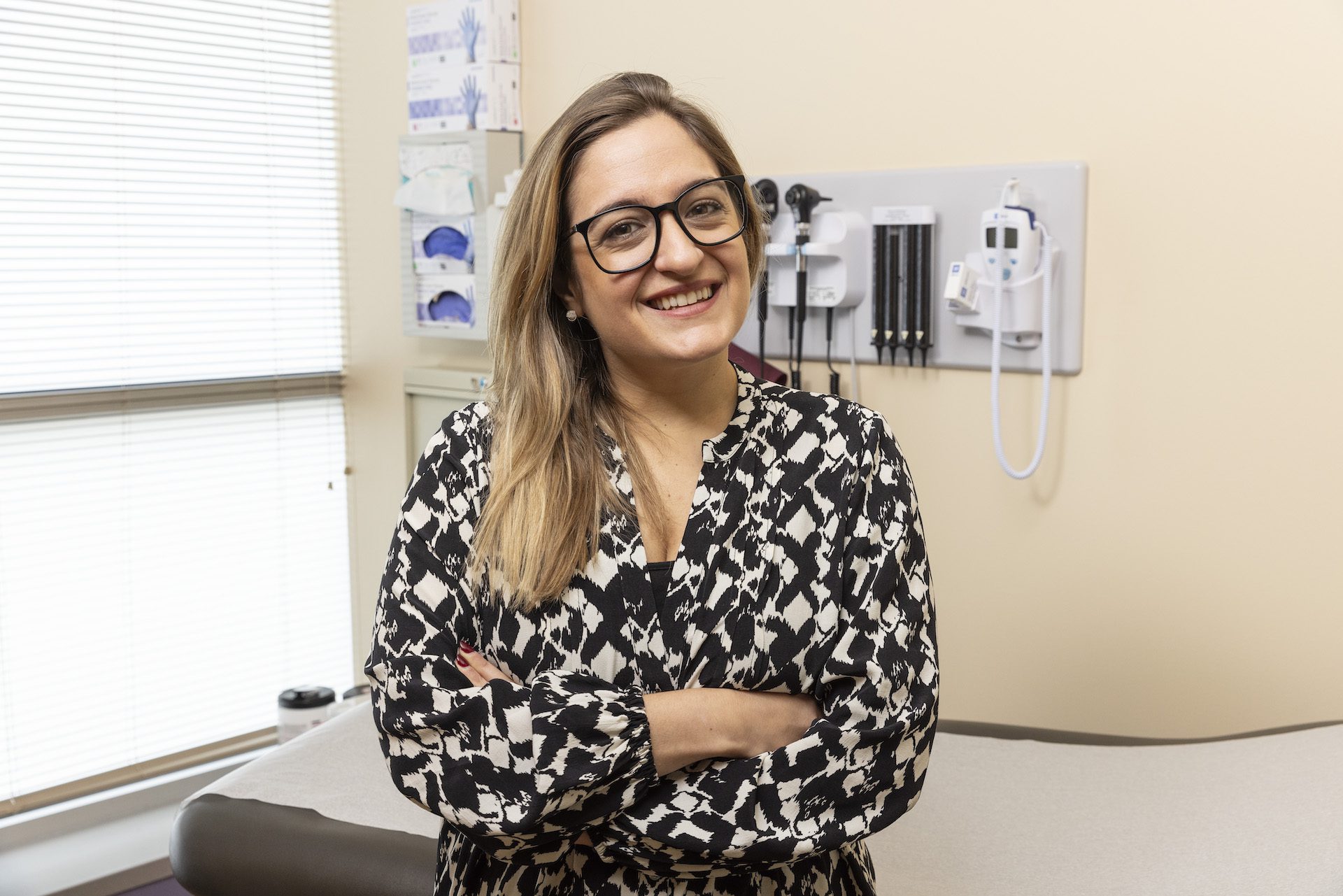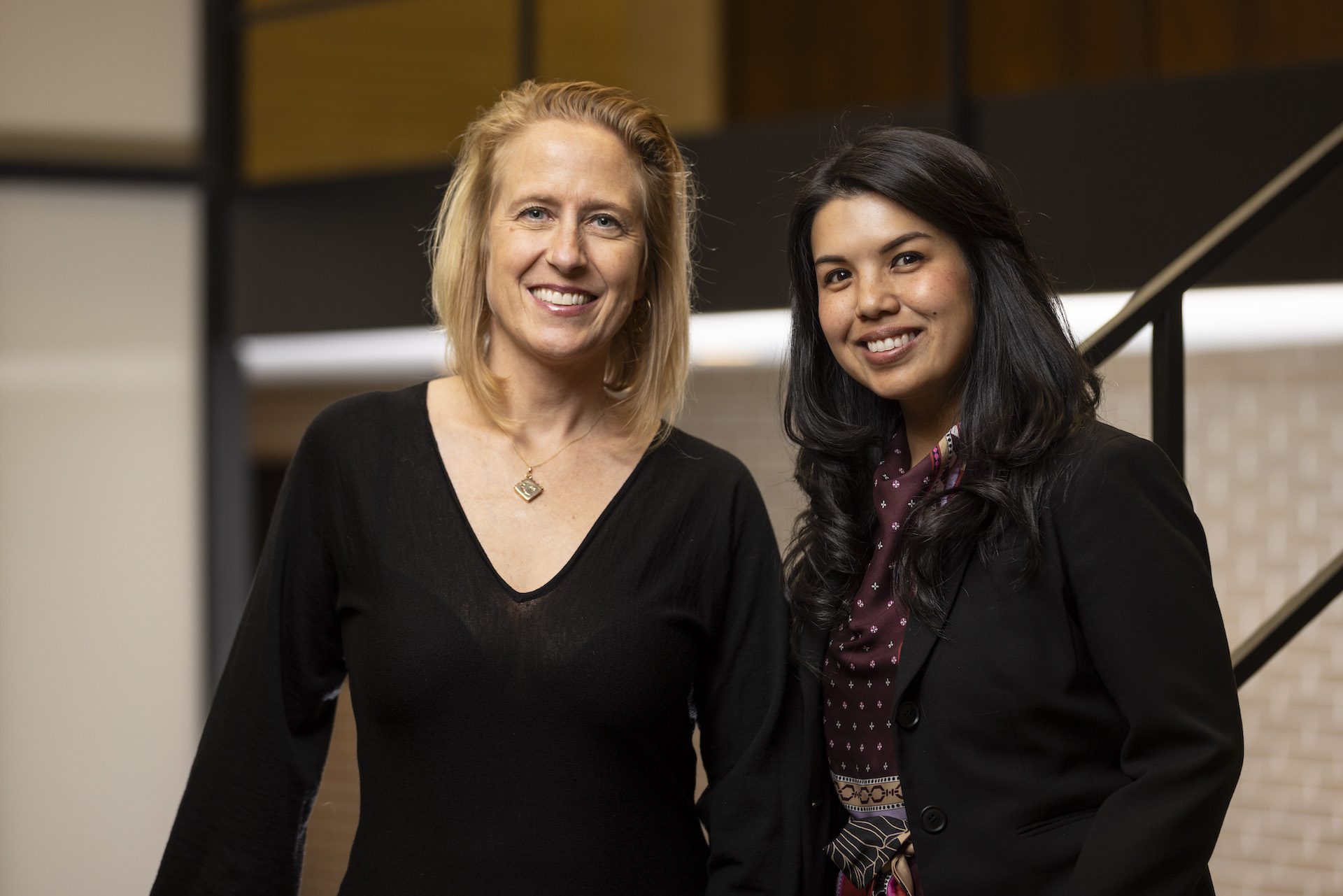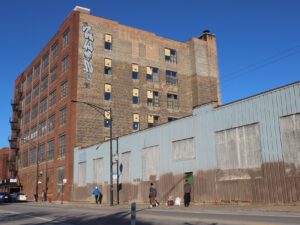 Manuel Martinez/WBEZ
Manuel Martinez/WBEZSupport groups are trying to address the obstacles to care, including language barriers and a persistent shortage of mental health workers.
This story was originally published in WBEZ Chicago.
Jorge Rubiano is a haunted man.
For months, he has tried to find steady work. For months, he has slept in a shelter, worrying about his wife and mother he left behind in Colombia. Are they safe? Did I make the right decision?
He is haunted by his journey to Chicago, a trip of more than 2,000 miles, during which he says he was kidnapped for a month, then escaped.
He left his country because he says the government threatened his life. There were nights when all he could do was cry in anger. He recalls a phone call with his wife in Colombia, cut short when the bus she was riding on was being robbed.
“I’m still in between two dangers,” Rubiano said in Spanish. “If I return it’s very possible they kill me, and if I stay I don’t know what can happen here.”
News that puts power under the spotlight and communities at the center.
Sign up for our free newsletter and get updates twice a week.
More than 30,000 migrants and asylum seekers have arrived mostly from South and Central America since late August of 2022. They are fleeing the collapse of their economies, the lack of jobs and food, and as one social worker puts it, “misery.” Many came here on a bus from Texas, where Republican Gov. Greg Abbott said Chicago and other sanctuary cities that embrace immigrants would provide much-needed relief “to our small, overrun border towns.” The buses haven’t stopped since.
WBEZ interviewed more than 30 people to understand the emotional toll migrants face, the army of helpers who are filling in the gaps of a frayed mental health system, and what’s at stake. Some of those helpers’ efforts are catching the attention of leaders in other big cities where migrants are heading.
For many, the journey here was harrowing. A young girl who fell into a river as her pregnant mother struggled to hold on to her small hand so the current wouldn’t whisk her away. Women who paid to move on from country to country not just in cash, but with their bodies. People who walked over the dead in the jungle and are wracked with guilt over the sick and injured left behind. Families separated once they got to the U.S. border, not knowing when they would see each other again.
Their stories have unfolded across Chicago in the quiet space of a therapist’s office, at a healing circle in the back of a storefront, with a nurse at a folding table propped up outside a police station so relatives inside couldn’t hear.
Others, like Rubiano, keep their trauma and pain to themselves. For many migrants, taking care of their mental health might not be a priority — if they even want to. After all, for months they have been living in tents outside amid Chicago’s brutal weather, in police station lobbies or in shelters with little privacy. They are dependent on strangers for everything from their next meal to clothes for their children.
“They’re in survival mode,” said Sharon Davila, a school-based social worker who has screened migrant families. “They need their basic needs met. The number one thing is they’re looking for jobs.”
Just getting in front of a therapist or a social worker can be extremely difficult for even the most savvy and persistent. With a shortage of mental health workers, wait lists for an appointment can be months long.
Layer on being new to this country, speaking a different language, having no health insurance or a permanent place to live, and trying to find a mental health provider who understands the culture and world you come from. Getting help can seem impossible. And that’s if you know help exists.
“Their stories are starting to unravel,” said Susie Moya, a therapist in Pilsen who has worked with migrants on the Lower West Side.
She’s worried about a brewing mental health crisis among migrants. Emotional scars can be invisible, yet simmer under the surface.
“Right now it’s on the back burner,” Moya said. “But I’m thinking a year from now when these families are settled in. Who is going to be providing that support?”
A healing circle offers hope
On a Monday night in November in the back room of an insurance agency on the Southwest Side, about 20 migrants gather chairs in a circle. Each person takes a turn describing how they feel on a scale of one to 10, as social worker Veronica Sanchez gently encourages them to share why.
Warm homemade chicken soup and arepas await them for dinner as the group lays out their frustrations and glimmers of hope.
A woman says her husband got deported. She’s heartbroken that she left her children behind. A man says he worked several days that week, but never got paid. Another says he is grateful to God for bringing him to America. But he misses his mom, dad and brothers.
Sanchez soaks it in. She listens, then offers feedback with a smile.
Finding work and reuniting with family is important, she tells them. But it’s their mental health she’s concerned about.
“The reason we make these circles … [is] more than anything to truly know how you are and to open a safe space where you can share your emotions, your despairs and your questions,” Sanchez said in Spanish. “Maybe we have answers. Maybe we don’t. But when you open up a safe space where you can share your sorrows, they feel better shared because you don’t feel so alone.”
Creating community and connections among each other can empower them, she says. Sanchez sees how easily immigrant children can become friends, but not so much their parents. They tend to put up walls.
She encourages the group to visualize their future, when they would think back and remember this difficult moment. She ticks off other cultures of immigrants who have come to the U.S. before them — the Irish, Mexican and Italian.
Sanchez understands their desperation to work and to see their loved ones. She is one of them.
Sanchez comes from a long line of pottery makers in Mexico. When the economy crashed and the government changed at one point, her father left to work in suburban Cicero. She was just 4 years old. She didn’t see her father for almost seven years. He sometimes worked two to three jobs in a factory to help support his family. Her parents wrote each other letters, so many they filled a shoebox.
Sanchez recalled being more worried about her mom and how she felt. She would dream of her father sitting by a pine tree covered in snow, a reflection of the photograph he mailed to the family.
Eventually, her father was able to reunite with his wife and kids, bringing them all to Cicero. His sacrifice, and her own, is a reflection of where Sanchez says migrants today can get.
“When I was talking to them, it really came from the heart,” Sanchez said of the healing circle. “I was seeing the migrants’ faces, that they were so scared.
“I’m pretty sure my parents went through that same process of not knowing what was going to happen, not knowing if he was going to come back, not knowing if he was going to find a job, not knowing if he was going to have enough to send money back to us for us to survive.”
Informal support groups like the one Sanchez led have popped up around the city in shelters, storefronts, churches and schools. They’re often driven by volunteers, advocates and mental health providers who see the grief and fear in the migrants they’re helping — or they want to prevent it.
But in some cases the relief has been temporary, popping up for a few to several weeks, then dismantling as helpers burn out, migrants prioritize other needs or places where the city housed asylum seekers change. All of this raises questions about the sustainability of these efforts.
Still, the support groups are an attempt to fill gaps in a frayed and understaffed system. Illinois is among states with the greatest shortage of mental health workers, according to KFF, a nonprofit health policy research group. Last year, only about 22% of the need for mental health providers in Illinois was met, based on the number of psychiatrists available.
A recent assessment underscored the lengthy wait times in Chicago — one to seven months — at many of the clinics the city partners with to create what city leaders have heralded as “no-barrier” access to mental health services.
“When we think about what the need for mental health services truly is (among migrants), I don’t think we even can begin to even fully understand the depth and scope of that because individuals are still in their trauma,” said Steph Willding, CEO of CommunityHealth, a free health center that has been treating migrants. “There’s going to be a lot of things that come to the surface with time.”
The lasting impact of trauma
Some volunteers and mental health providers emphasize that not every migrant might be experiencing severe trauma, or that for many, establishing a connection with another person could be enough to help them get through.
But for others, trauma can have a lasting impact. It can change the wiring in your brain and make a person more vulnerable to depression and anxiety. That can pass down from generation to generation, said Laura Pappa, a psychologist in Chicago. Even daily or ongoing stressors can be what Pappa calls “little t” trauma, like not feeling welcomed right away.

Chronic stress can change a person’s physical health, potentially impacting a child’s growth and development, for example. Young children can be inconsolable, defiant even, and have trouble separating from their parents, said Rebecca Ford-Paz, a child psychologist at Lurie Children’s Hospital of Chicago. They can start to regress. A potty-trained kid might suddenly wet the bed or return to sucking their thumb. As kids grow up, they could have a hard time forming relationships and trusting other people. They may be explosive and quick to anger, Ford-Paz said.
So as thousands of migrants arrive and try to acclimate to a new world, setting their trauma aside could have ripple effects.
“A lot of people come here seeking the American dream and they realize that that’s not there,” said Pappa, who came to the U.S. from Argentina as a teen. “A lot of people were not expecting that, how hard it is on this side. I’ve had a lot of parents who’ve come alone and ask themselves, was it worth it? Was it worth it to leave my kids? That’s not necessarily something I can answer, but I can totally empathize with the pain.”
Social worker Amy Hill specializes in working with kids who are refugees and asylum seekers. She sees a range of emotions in her patients.
“Maybe they’re getting picked on in school and that’s really what’s their biggest concern right now,” Hill said. “Or they see their parents stressed out and worried and they’re worried for their parents, right? Or they have a crush on a boy and that’s what they want to talk about.”
She offers solace inside her office, a former nun’s bedroom tucked upstairs in an old convent on a quiet street. It’s the opposite of a sterile doctor’s office. There’s a world map on the wall for kids to point out all the places they have been and survived. There are meditation balls from Hill’s late mother that help her feel at home and comfortable.
Hill has launched support groups for Ukrainian students who struggled to fit in. As children went back to school last fall, she said she got more calls from school counselors and teachers who work with children who speak different languages asking how to help migrant children adjust.
To help kids cope, Hill focuses on the strengths that helped the children make it this far. They practice deep breathing exercises to calm their bodies when they get overwhelmed. It’s about putting their traumatic experiences in the past, and not something causing them distress in the present.
“You have no culpability in what happened to you,” Hill tells them.
It can be hard to sway migrants to even seek help, however.
There’s a stigma about the need for mental health care in many immigrant communities. That’s especially prevalent in Latino cultures and among Latino men in particular, Pappa said. She mentions Latino patients in their 60s who are only now dealing with depression they have had for years.
“I do see a lot of parents,” Pappa said. “I see it in their face that when their kiddos say, you know, I am depressed or I am sad or I have suicidal thoughts. The parents just tear up not only because their kid is feeling that way, but also because they feel shame. They feel they didn’t do a good job.”
Pappa felt this stigma as a girl. She remembers being “a very emotionally attuned kid.”
“I would be like, ‘Mom, I’m a little sad today.’ I would use words that were a little bit ahead of my age to describe my feelings,” Pappa recalled. “My mom was like, ‘Oh, my God, don’t talk like that.’”
From a very young age she got the message: being overly emotional about negative feelings is bad. Reel it in and control it.
That stigma is changing, Pappa says, as talking about emotions is becoming more common.
Chicago could be a model for other cities
Given the dearth of mental health providers, there’s a big effort to find other ways to give migrants at least some emotional help.
The Coalition for Immigrant Mental Health along with University of Chicago’s Crown Family School and Lurie Children’s Center for Childhood Resilience are training hundreds of people who are on the front lines where migrants are staying.
They include case managers, shelter supervisors, outreach workers — not people with a medical background — who learn how to lead Café y Comunidad charlas, or coffee and community talks.
Besides building community, the idea behind these support groups is trying to prevent the most extreme outcomes and to help migrants feel less isolated. Being detached from family and unable to work is “sort of a recipe for hopelessness, helplessness, all those suicide risk factors that we’re concerned about,” said Ford-Paz from Lurie and a leader in the coalition.
In December of 2022, a newly arrived immigrant from Venezuela whose sister said her mental health was deteriorating took her own life. Her family is pushing to understand why more wasn’t done.
“We have to help people the minute they arrive,” said Aimee Hilado, an assistant professor at UC’s Crown school who chairs the coalition. Hilado and Ford-Paz spearheaded the charla program together. “That’s actually going to promote healing down the line.”

Case managers Angie Arbelaez and Albert Ayala have led a charla at a shelter in the former Standard Club downtown. Inside the ballroom of the club, migrants sit in a circle and are encouraged to stand when they share what’s on their mind. Sometimes 60 to 80 show up. Some are so overcome with emotion they leave.
There are ice breakers — playing “hot potato” with a football — and moments of joy, such as when a woman said she was searching for love and hands shot up hoping to catch her attention.
They say they’ve seen a shift in the demeanor around the shelter since the charlas began, and have watched migrants who arrive scared and shy blossom after attending the group sessions. Ayala is Mexican American.
Read More of Our Coverage
“We try to tell them we’re no different from you,” Ayala said. “We all have a story and we can relate to you to some extent, right? It’s kind of like … your dream is possible. But you have to make sure that you have the right mindset.”
They tell the migrants to vent, that crying is good, not to hold their emotions in.
“I know this season coming up, Christmas, is gonna trigger a lot of people,” Arbelaez, who is Colombian, said before the holiday. “Hopefully these charlas help them at least brighten up their days.”
But transition is a constant. Arbelaez has since left her job, according to Ayala.
This program could be a model for other cities. Hilado said leaders in Philadelphia and San Jose have reached out asking how to replicate the effort. In New York, there has been a similar push to train people who aren’t mental health specialists to identify signs of distress and link migrants to services.
What happens next?
Rubiano, the 43-year-old migrant from Colombia, has kept busy working on his English skills, and he recently got a full-time job in a supermarket.
He longs for his family, for the chance to bring them here, once there is a stable life he can offer them. His hope waxes and wanes.
“There are days when you say, ‘I won’t give anymore, I’ll leave,’” Rubiano said in Spanish. “There are other days in which you reflect and say, ‘Come on and take stock and say, not everything is bad. Not everything is bad.’”
WBEZ is part of the Mental Health Parity Collaborative, a group of newsrooms that are covering stories on mental health care access and inequities in the U.S. Partners include The Carter Center, the Center for Public Integrity and newsrooms across the country.
WBEZ’s Manuel Martinez contributed.


